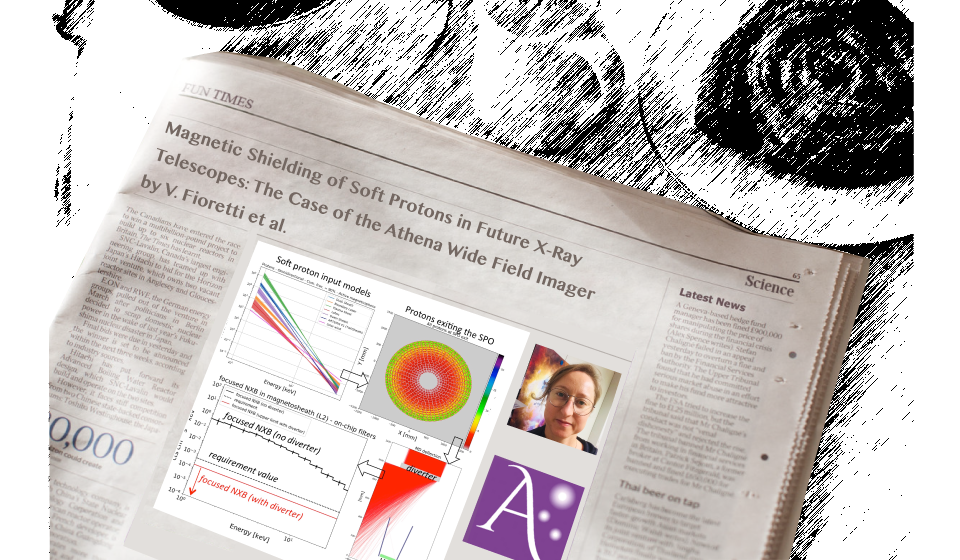
Magnetic Shielding of Soft Protons in Future X-Ray Telescopes

By Valentina Fioretti
Interplanetary space and Earth’s magnetosphere are both populated by low-energy (<300 keV) protons that are potentially able to scatter on the reflecting surface of the optics of X-ray focusing telescopes and reach the focal plane. Given Athena’s large effective area (1.4 m2 at 1 keV), the minimization of the contamination from soft protons is a key for performing observations at the sensitivity limit. Examples are surveys for faint high-z super-massive black holes or studies of the extended thermal emission in clusters of galaxies, among the main scientific goals of the Wide Field Imager (WFI) detector. For this reason, the WFI is the best case study for evaluating the soft proton induced X-ray background and the shielding efficiency of a magnetic diverter that deflects protons away from the field of view.
We find for all plasma regimes encountered in either L1 or L2 orbits that without a magnetic diverter, protons are indeed funnelled toward the focal plane well in excess of the requirement set by the Athena science objectives (5 × 10−4 cnt cm−2 s−1 keV−1 in 2 – 7 keV). This strongly suggests the use of a proton diverter as a shielding system on board Athena and all high-throughput X-ray telescopes operating in the interplanetary space. For a magnetic field computed to deflect 99% of the protons that would otherwise reach the WFI, Geant4 simulations show that this configuration, in the assumption of a uniform field, would efficiently shield the focal plane, yielding a residual background level of order or below the requirement.

